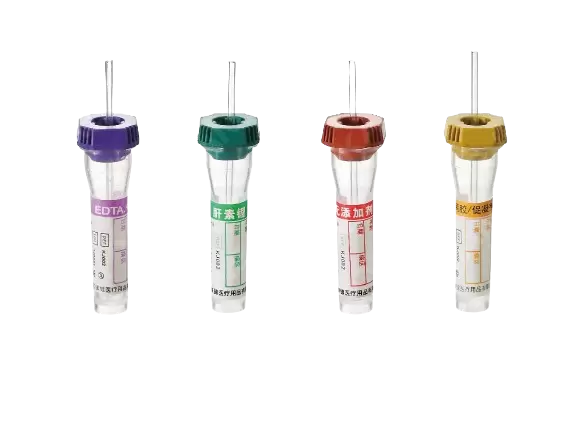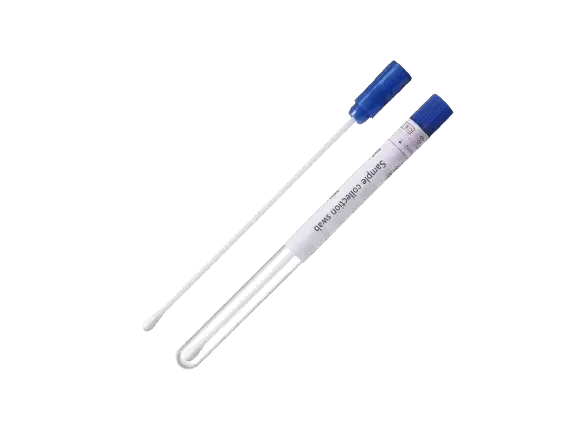Tiny Tube, Mighty Purpose: How the EDTA Capillary Tube Is Revolutionizing Blood Diagnostics
In clinical medicine, precision begins with the sample. For countless diagnostic tests, especially those involving hematological analysis, the reliability of results is directly tied to the integrity of the collected blood specimen. While sophisticated analyzers and advanced software receive much attention, it is often the most basic tools—such as the EDTA capillary tube—that lay the groundwork for accurate results. These small tubes, coated with anticoagulant, are indispensable in scenarios where venous blood collection is impractical or too invasive, enabling accurate, low-volume sampling for vital tests.
What is the EDTA Capillary Tube?

An EDTA capillary tube is a narrow, cylindrical blood collection device designed for small-volume sampling, typically used for capillary blood drawn via fingerstick or heel prick. The inside of the tube is pre-coated with EDTA (ethylenediaminetetraacetic acid), an anticoagulant that binds calcium ions to prevent clotting. This ensures that the cellular components of the blood remain intact and unaltered, making the tube ideal for complete blood counts (CBC), differential counts, and other hematological assessments. Available in various sizes and EDTA types (such as K2EDTA or K3EDTA), these tubes are essential in pediatric, geriatric, and point-of-care settings.
Applications of EDTA Capillary Tubes in the Medical Field
EDTA (Ethylenediaminetetraacetic acid) capillary tubes are indispensable tools in modern clinical diagnostics. They are specifically designed for collecting small volumes of blood while preventing coagulation, making them ideal for various medical scenarios where sample preservation and accuracy are paramount. These tubes contain a dry coating of EDTA, an anticoagulant that binds to calcium ions, thereby inhibiting the blood clotting cascade. This property makes them particularly suitable for analyses requiring intact cellular morphology. Their small size and minimal sample requirements are especially beneficial in pediatric, neonatal, emergency, and resource-limited environments. Across diverse specialties, EDTA capillary tubes support both manual and automated testing methods, ensuring reliable results and improved patient care.
1. Hematology
In hematology, EDTA capillary tubes are considered the gold standard for a wide range of blood-based diagnostic evaluations. One of their primary uses is in performing Complete Blood Count (CBC) tests, which are essential for assessing the patient’s overall health and identifying conditions such as infections, anemia, clotting disorders, and hematological malignancies. EDTA plays a critical role in preserving the morphology of red blood cells, white blood cells, and platelets, ensuring accurate measurements and preventing artifacts that could lead to misinterpretation. Furthermore, these tubes are essential for the preparation of peripheral blood smears used in manual differential leukocyte counts. Such smears help identify abnormal cells, blast forms, or parasites like Plasmodium species in malaria. The anticoagulant effect of EDTA maintains a uniform cell distribution, preventing clumping or distortion. In addition, EDTA-preserved samples can be used for reticulocyte counts, red cell indices, and erythrocyte sedimentation rate (ESR), providing a comprehensive profile of hematologic health. The reliability and quality of results obtained from EDTA-collected samples make these tubes integral to diagnostic labs worldwide.
2. Neonatal Screening
In neonatology, the use of EDTA capillary tubes has revolutionized early diagnostic testing in newborns by allowing for the collection of blood samples with minimal invasiveness and risk. Newborns have a very limited blood volume, and venipuncture can be technically challenging and potentially harmful. EDTA capillary tubes facilitate micro-sampling from heel pricks, enabling the safe acquisition of just a few drops of blood for critical screenings. These include bilirubin testing for jaundice, which is vital for preventing kernicterus—a dangerous form of brain damage caused by high bilirubin levels. EDTA tubes are also used in neonatal sepsis screening, where a CBC and C-reactive protein test can provide early signs of infection. Another major application is hemoglobin electrophoresis, which helps identify inherited hemoglobinopathies such as sickle cell disease and various forms of thalassemia. Early detection of these disorders enables timely intervention, including prophylactic antibiotics, vaccination, and specialist care. Moreover, EDTA-preserved blood may also be used for TSH and metabolic screenings in expanded newborn panels. The ability to obtain accurate, high-quality diagnostic information from such a small sample volume makes these tubes invaluable in neonatal intensive care units (NICUs) and maternity wards.
3. Point-of-Care Testing (POCT)
EDTA capillary tubes are highly advantageous in the growing field of Point-of-Care Testing (POCT), which involves performing diagnostic tests close to the patient rather than in a central laboratory. This approach is critical in emergency settings, remote healthcare facilities, ambulances, military deployments, and disaster response scenarios where rapid diagnostic information is needed to guide immediate treatment. Because EDTA inhibits clotting and preserves blood components even in small volumes, it ensures that results from portable analyzers and handheld devices are reliable and reproducible. These tubes are commonly used for blood glucose monitoring in diabetic emergencies, lactate measurements for assessing tissue hypoxia in trauma or sepsis, and hemoglobin/hematocrit testing to evaluate anemia or bleeding. EDTA capillary tubes are compatible with a variety of microfluidic devices and lab-on-a-chip technologies, making them ideal for modern, compact diagnostic platforms. They also support rapid coagulation tests, such as PT/INR, and some cardiac markers depending on the system. Their design minimizes sample contamination and ensures consistent volume delivery, which is crucial for device calibration and result accuracy. In rural or low-resource environments, they eliminate the need for centrifugation or cold-chain storage, making diagnostics accessible and effective in even the most challenging conditions.
4. Transfusion Medicine
In transfusion medicine, EDTA capillary tubes play a critical role in ensuring the safety and compatibility of blood products. One of their most important applications is in blood typing, where accurate determination of ABO and Rh groups is essential to prevent potentially life-threatening transfusion reactions. The EDTA within the tube stabilizes red blood cells by preventing clot formation while maintaining cell membrane integrity, thus supporting precise serologic testing. These tubes are also integral to cross-matching procedures, in which donor red cells are tested against recipient serum to detect antibodies that could cause agglutination or hemolysis. EDTA capillary tubes provide a clean, anticoagulated sample for this purpose, allowing for clear and interpretable test results. Additionally, they are used for antibody screening and identification, particularly in patients with complex transfusion histories or alloimmunization, such as those with sickle cell disease, thalassemia major, or autoimmune hemolytic anemia. Because only a small sample is needed, these tubes are especially helpful in pediatric and critically ill patients who cannot afford larger blood draws. Their consistent performance and reliability in preserving red cell characteristics make them a standard collection tool in blood banks, donor screening programs, and immunohematology laboratories.
From routine blood counts to life-saving transfusion compatibility checks, the EDTA capillary tube serves as a silent cornerstone in clinical diagnostics. Its ability to preserve blood integrity in low-volume samples makes it uniquely suited for settings where conventional venipuncture is difficult or impossible—whether in neonatal units, emergency departments, or remote medical outposts. As healthcare continues to move toward more precise, rapid, and minimally invasive testing methods, the role of the EDTA capillary tube remains as relevant as ever. Though small in size, its impact on diagnostic accuracy and patient outcomes is undeniably profound. In an era driven by technological advancement, this humble device reminds us that the foundation of good medicine often lies in the reliability of the simplest tools.




